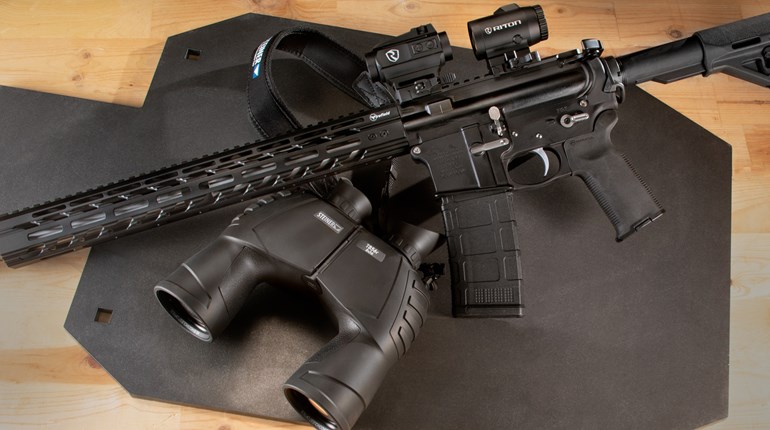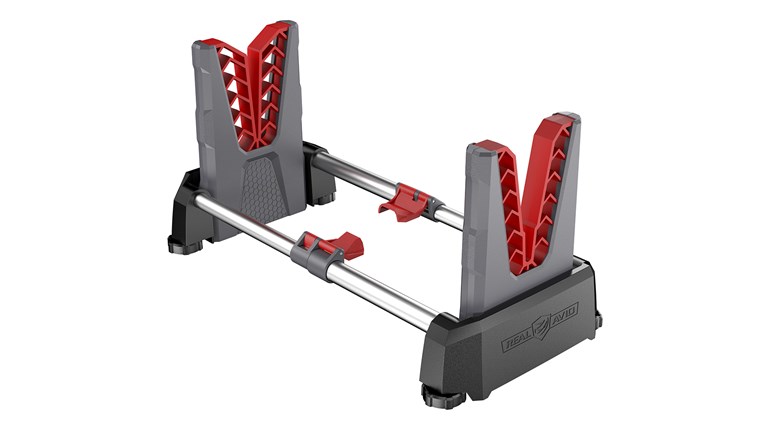
We are peppered with warning signs from our earliest days. Yellow caution lights, flashing railroad signals and “Don’t pet the alligator” signs are intended to help us live long enough to see how little Social Security we have earned. Sometimes, our equipment—rifles included—issues warning signs of its own. Our challenge is to heed the red flags instead of driving on toward potential damage to people or gear.
The most-common warnings tend to center around how well or poorly our rifles digest their ammunition. For example: Having to beat your bolt into battery when chambering a cartridge is akin to hearing your rifle scream “stop!” at the top of its tiny lungs. The problem could be caused by a cartridge that was loaded too long for the chamber, brass that was not correctly sized, debris around the locking lugs or a barrel obstruction. The best way to determine where the trouble lies is to cease fire, clear the rifle and then start your investigation. Deciding instead to “power through it” and then pulling the trigger very well may turn your rifle’s receiver, barrel and magazine into a hand grenade. (There is a box of someone else’s gun remnants sitting on a shelf in my shop that proves it.)
High-pressure symptoms are probably the most commonly encountered stop signs our rifles provide. Inspecting spent cases whenever you try new ammo, changing a handload recipe or shooting in drastically different atmospheric conditions can help you spot potential issues. Primers warn us in the form of “blowing” completely out of the brass, cratering (a slightly raised lip around the firing pin indention), flattening out or being pierced by the firing pin. Minor flattening or cratering is not uncommon, especially when firing heavy bullets. Either condition needs to be watched, but neither is cause for alarm so long as it is minor and limited to one ammo type.
But, when multiple factory loads are showing these signs consistently, it is time to have the rifle looked at by a qualified gunsmith or the firearm’s manufacturer. The same goes for blown primers, damage to the case head with semi-automatic rifles or brass flow into a bolt’s ejector-pin hole on any gun: A minor amount is not abnormal for heavy loads, but excessive or consistent damage is cause for concern.
Consistently pierced primers warrant more immediate action. Checking your brass will reveal piercing, but sometimes you get an earlier warning from a blast of gas in your face and the contents of an external magazine littering the ground under your rifle. This is your cue that it is time to stop and find the source of the problem. Piercing can force small discs of primer material into a bolt’s firing-pin hole, eventually causing other problems. A jammed up firing-pin bore can stop pin movement and possibly fix the firing pin in the forward position. That may lead to a “runaway” machine gun, firing every time the bolt slams forward on a fresh round or worse, firing out of battery. A full-auto surprise is bad enough, but a gun that fires out of battery can be catastrophic for the shooter and anyone nearby.
At any sign of primer piercing, stop using the suspect ammunition and ensure the firing pin and bolt are closely inspected for proper function or damage. Just a few pierced primers can erode a firing-pin tip, leading to greater primer-piercing frequency, leading to more firing-pin damage, and so on.
Other harbingers of pressure trouble include bent firing-pin-retaining pins, broken extractor pins, bent or broken extractors, a sudden increase in recoil/muzzle blast/gas without a change in ammo, case-head separation or spent cases that are split or ruptured. In each case, it makes more sense to stop what you are doing and look for the source of the problem(s) than it does to just keep banging away.
Firearm-safety courses include warnings about “squib” loads that do not fully push a projectile out of the barrel. Hopefully, we notice this through a muted report and reduced recoil (referred to as “Pop-No-Kick”) before attempting to fire another round. But, subsonic rifle ammo renders the differences between normal cartridges and squibs much less obvious. This is doubly true when sound suppressors and/or hearing protection are used. A good rule of thumb when using lower-power ammunition is that if you do not actually see or hear each round impact downrange, stop what you are doing, clear the rifle and check to ensure the bore is not obstructed before firing another round.
A drastic change in zero is also worth investigating. Assuming your ammo, target location and environmental factors are consistent; suddenly being way off your point-of-aim could signal a failure of one or more components. Rather than shifting your point-of-impact to “chase the zero,” take the time to figure out what caused the shift.
Lastly, if manually extracting a live round from your rifle’s chamber leaves a bullet stuck in the bore, do not simply clear it, reload and go back to shooting. I know this seems obvious but you might be surprised by the number of people I have seen who simply knocked the stuck projectile out of the bore with a cleaning rod, dumped the loose powder out of their action, then proceed as if all was normal. A bullet stuck in the throat indicates that either the cartridges are loaded too long, have insufficient neck tension/crimping or the rifle has a problem with the barrel’s chamber/throat. Any and all can lead to trouble with continued shooting.
Resist the urge to keep shooting if you see obvious signs that something is amiss. I rebarreled a rifle for a guy who ignored escalating pressure signs as he worked through a series of handloads. He burned his .308 Win. barrel up and damaged his bolt in just 500 rounds. Fortunately, he got off easy with only a monetary lesson—he was lucky enough to escape serious injury, which may not always be the case—but it could easily have been avoided. Don’t wager that ignoring the “stop signs” your rifle sends will always be without a measure of pain, either financially or physically.



































